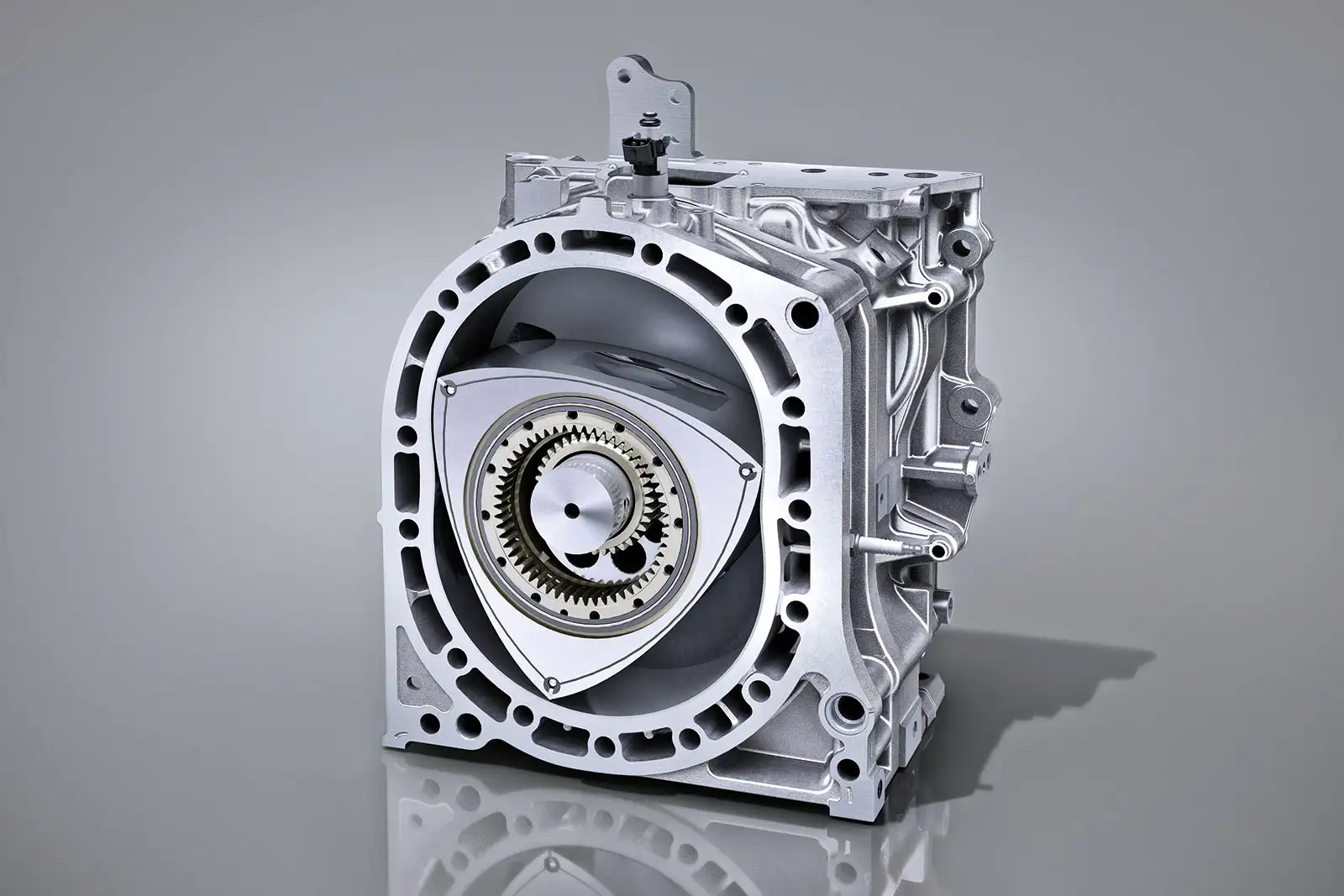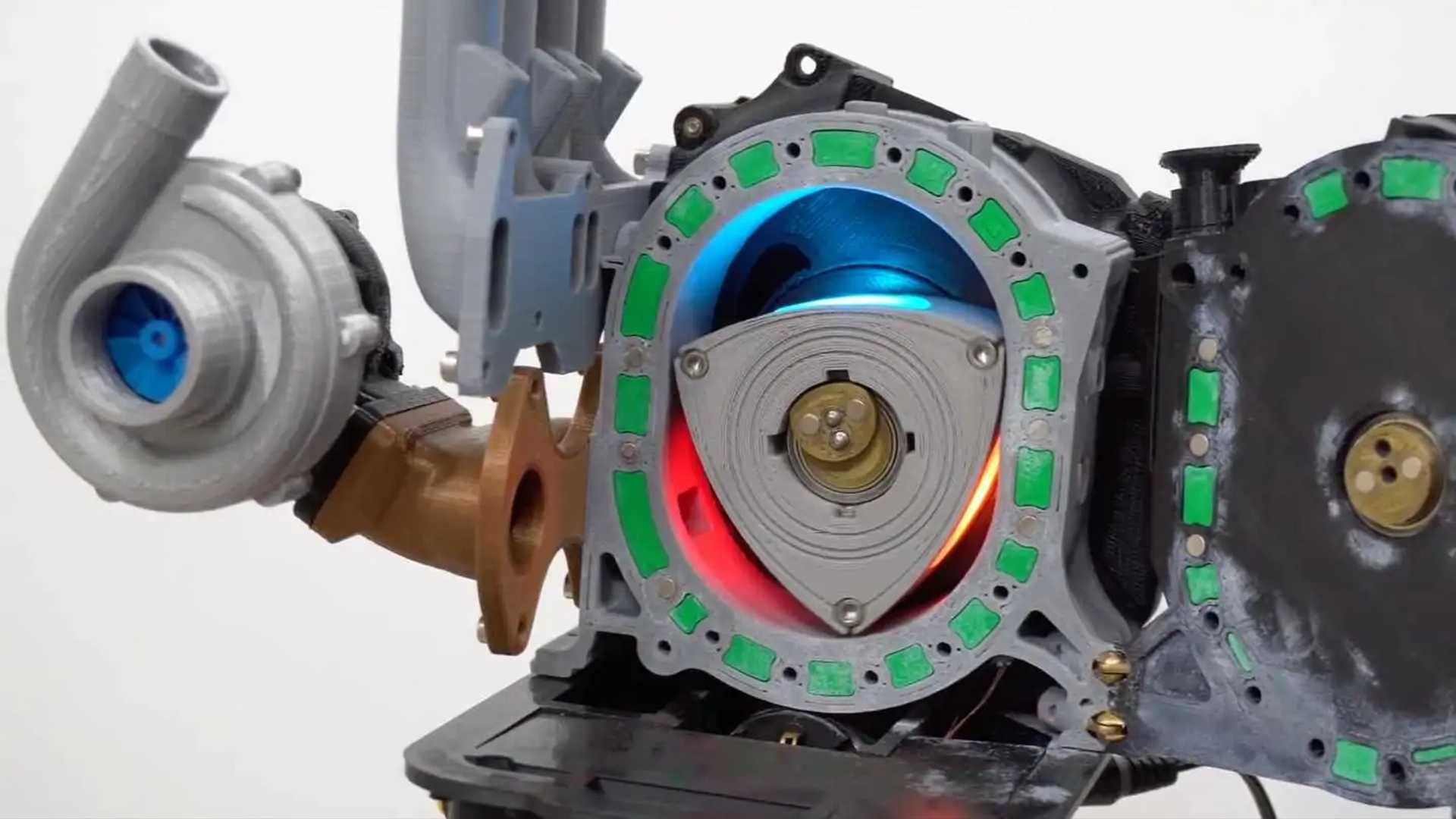Mazda has recently announced an exciting revival of its iconic rotary engine, a decision that has stirred considerable enthusiasm among automotive enthusiasts.
This engine, renowned for its unique design and high-revving capabilities, had been absent from production since the discontinuation of the RX-8 in 2012. With this move, Mazda aims to blend its rich heritage with modern advancements, focusing on sustainability and innovation.

The rotary engine will make its comeback as a range extender for Mazda’s electric vehicles. The innovative approach aims to combine the benefits of electric power with the distinctive performance characteristics of the rotary engine.
The first model to feature this technology will be the Mazda MX-30 e-SKYACTIV R-EV, set to launch in Japan and Europe. This vehicle will utilize the rotary engine to generate electricity, thereby extending the driving range without compromising the environmental benefits of electric power.
Mazda’s decision to reintroduce the rotary engine is part of its broader strategy to achieve a carbon-neutral society. To support this initiative, Mazda has re-established its RE Development Group, a dedicated team of engineers tasked with advancing rotary engine technology.
This group will focus on enhancing the efficiency, durability, and exhaust gas purification of the rotary engine while exploring the use of carbon neutral fuels. These efforts aim to ensure that the rotary engine meets regulatory standards in major markets and contributes to Mazda’s sustainability goals.
The revival of the rotary engine underscores Mazda’s “challenger spirit”, a core value that has driven the company’s innovation and success over the years. Mazda CEO Akira Marumoto emphasized the company’s dedication to delivering the “Joy of Driving” and “Joy of Living” through its vehicles.
The rotary engine, with its unique characteristics and driving dynamics, plays a crucial role in fulfilling this vision. Beyond its role as a range extender, Mazda is exploring other potential applications for the rotary engine. This includes integrating it into future hybrid and electric models, further demonstrating Mazda’s commitment to versatile and sustainable automotive solutions.
The company’s engineers are continuously working on state of the art internal combustion engine functions and efficiency improvements, broadening their perspective beyond traditional engine systems. The return of the rotary engine is a significant milestone for Mazda, as it continues to push the boundaries of automotive technology and sustainability.

With its rich history and innovative approach, Mazda is poised to make a lasting impact on the future of electric mobility. The company’s commitment to blending tradition with innovation ensures that the rotary engine will play a pivotal role in Mazda’s future vehicle lineup.
Mazda’s plan to revive the rotary engine is a testament to its dedication to innovation and sustainability. The integration of this iconic engine into modern electric vehicles highlights Mazda’s ability to honor its heritage while embracing future technologies.
As the company continues to develop and refine its rotary engine technology, it will undoubtedly contribute to a more sustainable and exciting automotive future.

